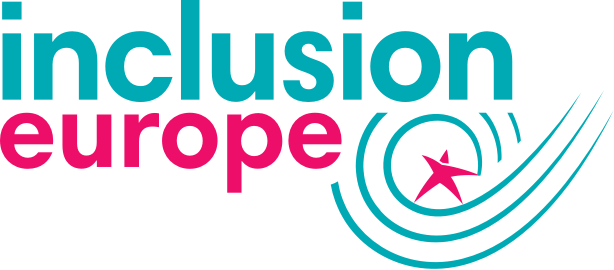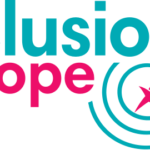 |
A lot of women are victims of violence at home.
Violence at home means Women with disabilities are often the victims of violence For women with disabilities it is more difficult to go away form the person that treats them badly. This is because the person often gives them care. It is also difficult for women with disabilities to get help. This is because the women shelters are not adapted to their disabilities. Sometimes people do not believe them. It is important that countries protect women |
November 25 marks the international day for the elimination of violence against women. As probably the most common form of violence against women, domestic violence has been put under the spotlight in a number of places. Evidence has reported that an average of one woman is killed every three days by her partner and one incident of domestic violence is reported every minute to the police. Proof has also revealed that women with disabilities are twice as likely to be victims of domestic violence as other women.
In Europe, one in five women will or has already experienced domestic violence. For women with disabilities this figure doubles. One in two women with a disability has been or will be victim of domestic violence and abuse at least once in her lifetime, be it on the hands of their partners, family, or carer. Some of the experience of women with disabilities toward domestic violence follows the traditional definition of the term such as physical abuse, verbal abuse, sexual abuse, but a wide part of it also takes unique and complex forms related to their disabilities. These include neglect, overdosing or withholding medication, stealing money, immobilization, financial abuse and denying necessary equipment or care.
Domestic abuse is rarely a one-off incident, and should instead be seen as a pattern of abusive and controlling behaviour through which the abuser seeks power over their victim. Typically the abuse involves a pattern of abusive and controlling behaviour, which tends to get worse over time.
In cases of abuse and violence against women with disabilities there is a disturbing ease with which power and control can be exerted as the abuser often not only has physical advantage but also a psychological one. Women with disabilities are more likely to depend on their abusers for food, personal care services, health care support and other vital roles. For this reasons many victims feel like they have no one else to turn to.
Barriers and obstacles to support
Barriers and obstacles, be they physical or attitudinal, make it harder for abused women with disabilities to leave or get support. Escaping an abuser can mean leaving home or a care facility, sometimes with no alternative in where to live or get care. Programmes that serve domestic violence victims are often not equipped or trained to offer proper care to disabled victims. Women’s refuges are rarely able to meet special needs and evidence has shown that some women have preferred to return to an abusive home after finding life in a refuge too difficult. Over these practical difficulties, simply being believed when reporting the abuse can be a hurdle for women with disabilities. Common experiences reported by women with disabilities include issues ranging from no-one believing their story to the absence of accessible transport to enable women to leave violent situations. Because of this lack of available support women with disabilities are likely to endure abuse for a much longer period of time than others.
The impact of domestic violence on women with disabilities is very profound, as there is often very little support when they seek help. The range of responses women with disabilities report include depression, anxiety, self-blame, shame, low self-esteem, and self-harm.
A Human Rights issue
Domestic violence is an abuse of human rights. The challenge lies in ensuring that human rights law is used to its full potential in contributing to the movement to combat domestic violence, be it regarding all women or specifically regarding women with disabilities.
At European level domestic violence is considered a clear violation of several of the rights contained in the European Convention on Human Rights such as the right to life (Article 2); the right to be free from torture or inhuman or degrading treatment (Article 3); the right to respect for private and family life (Article 8); and the prohibition of discrimination (Article 14). One of the most recent developments in the area of human rights law and domestic violence is the adoption by the Committee of Ministers of the Council of Europe of the Convention on Preventing and Combating Violence against Women and Domestic Violence in April 2011.
Although the UN Convention on the Elimination of All Forms of Discrimination against Women (CEDAW) does not explicitly mention domestic violence, the CEDAW Committee has nevertheless interpreted the Convention’s provisions in such a manner so as to bring this issue within its scope. Moreover the UN human rights bodies have made a wide range of statements on the issue of domestic violence and have thus placed a broad range of obligations on states regarding this area. The provisions of the Convention are comprehensive in nature, encompassing not only criminal justice responses, but also areas such as raising awareness and the provision of social support measures to victims.
In cases of domestic violence on women with disabilities the Convention on the Rights of People with Disabilities can be used directly as its Article 16 on the freedom from exploitation, violence and abuse relates to domestic violence and carer abuse experienced by people (predominantly women) living with disabilities. Though, it believed that the use of both the CRPD and the CEDAW in a holistic and complementary manner should be able to bring better protection for women with disabilities as discrimination is based both on gender and disability.
What can be done?
Women with disabilities have the same right to live safe from violence and free from fear as other women. It is important for women with disabilities to be informed about the subject matter in order to be able to recognise an abusive situation. It is also crucial to know whom to turn to. In parallel, services must be prepared to meet the needs of women with disabilities, for them to be able respond to women with disabilities in the same way they would any other service user, and be prepared to use the law to protect women with disabilities from domestic violence.





